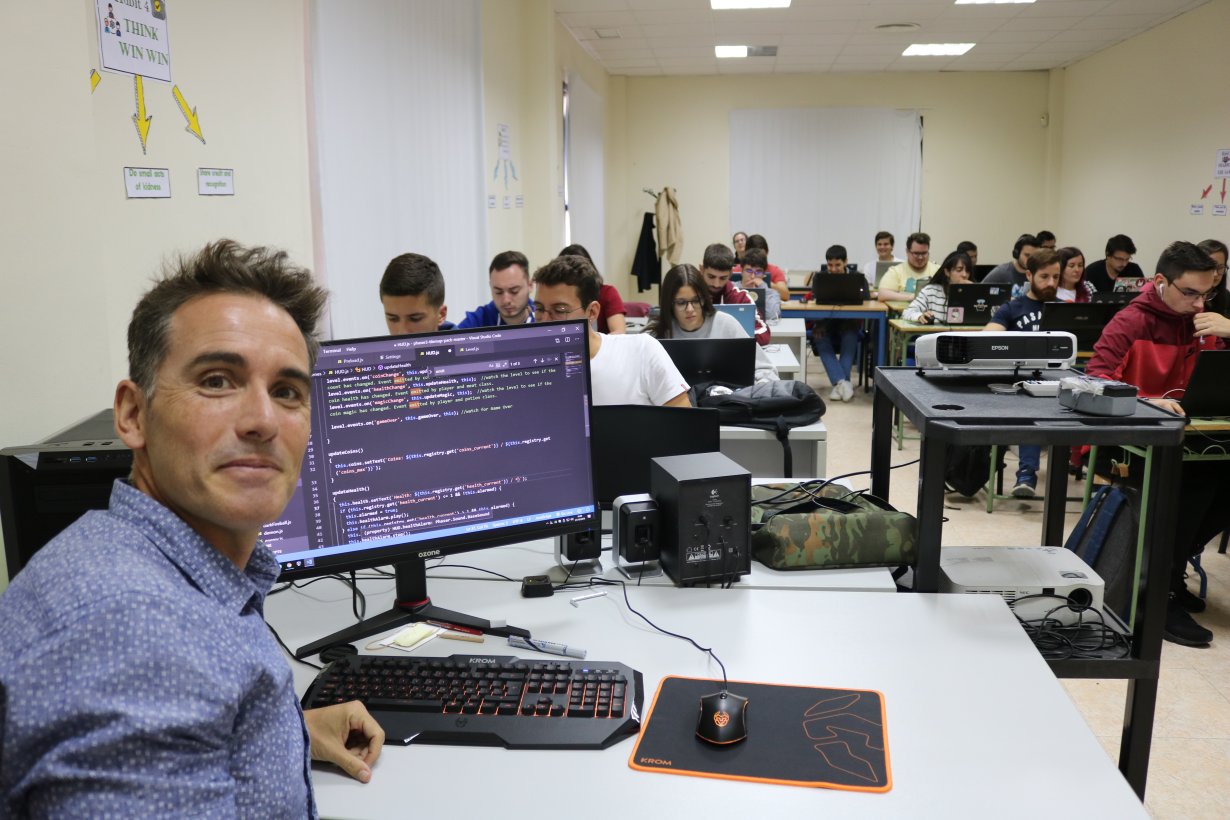
10 ways to keep online education engaging
The Covid-19 pandemic has turned our everyday life and routines upside down. School closures, remote working, physical distancing amongst many. The closure of education institutions has meant that teachers and trainers have now had to move their classes online. But crossing this line is no easy task. It requires learning new skills and adopting a new approach. Sergio Banderas, winner of the 2019 Educa Abanca Award as best vocational teacher and 2020 CODAPA class innovation winner, offers the following ten ideas to help keep vocational education on track in the transition to online learning.
1. Deliver Education bites
Successfully shifting from classroom-based teaching to online teaching requires an engagement strategy. To help support your students to stay focused, it is a good practice to aim to deliver short and clear messages. Rethink how to break large topics down into smaller elements so you can communicate each of them in a concise way.
Give a clear introduction to the topic you are discussing, and present the context and the objective of the session.
This should help limit distractions and ensure a safe learning environment that provides equal opportunities for all to participate.
2. Avoid Passive Learning
You should seek to banish passive learning, instead incorporate interactive activities into your online classroom and look for ways to involve students. Encourage students to participate, to communicate between each other and work in focus groups.
Teaching others is also a great technique for students to cement their learning. Presentations, pitches or peer reviews are activities that can help with this.
Use ingenious online tools, such as digital mind maps, tools for visual thinking and infographics, to help students to structure content, improve the understanding of complex ideas, stimulate their creativity and drive collaboration.
3. Online self-training “Learn to learn”
Learning continues throughout life and not only through organised courses. Encourage learning to learn in your class with a fun-focused online teaching plan. Engagement turns into motivation and motivation soon turns into habit.
Introduce different learning techniques and activities that can be adapted to your student's learning journey, such as learning how to make priority lists, forming chunks of information, brainstorming or conducting self-assessments. You can encourage your students to introduce this into their daily routines, starting with 15 minutes a day.
4. Soft skills in the digital sphere
In the switch to online teaching, I have identified five soft skills developed by students; adaptability, the new reality has taught us all alternative ways of communicating; being proactive and responsible for our own learning process; time management, learning to prioritise and to avoid distractions especially those that are just a click away; and creativity.
Embrace these soft skills and help your students to make the most of them in the classroom.
5. Use visual content for digital
Engagement also requires variety - make use of visuals to present and catch attention.
When possible, show yourself on camera to humanise your voice. Make use of tone of voice and body language to engage with your audience. You may want to pre-record your sessions and edit them to add extra effects such as background music, visuals or moving images.
6. Gamification in vocational education
Implement some game mechanics into your online classroom as an engagement tool. The main objective is to motivate and teach students through challenges, however, it is also an excellent tool for cementing complex theoretical knowledge.
Scoring can keep students engaged in competition, which in turn can drive teamwork and synergies. Try to establish a reward system to incentivise their effort and work.
7. Webinars with former students
Keep your students motivated by reconnecting with former students and asking them to share their experience. Peer connections are often stronger than those between teachers and students. Invite your students to prepare a set of questions before the meeting to ensure a dynamic environment and to keep the topic focused on what they really truly want to learn more about.
Embrace the benefits that technology and online meetings offer and record the sessions, which could be useful resources for future generations of students.
8. Make use of social media as professional branding
Creating a dedicated social media account may support your online teaching resources. Through different social media platforms you can follow different vocational education practitioners and stay connected beyond your school. You can also follow other VET projects, innovations and successes that you can bring into your classroom.
It is important that your students understand the benefits of platforms for jobs. Show them how to create a profile and how to enhance their employment potential.
9. Produce collaborative digital projects with younger generations of students
Bringing different generations of students together encourages vocational professions at an early age. Use this as an example of an activity that can encourage engagement amongst students. Review different activity types and make a note of which ones really resonate with your class. An example in our school is this video game production which comes from a collaboration between a vocational informatics student with primary students https://fpvideojuegos.gamejolt.io/bamakquest
10. Internationalisation of vocational education
The digital sphere brings new challenges but also opportunities. Encourage the expansion of linguistic competences of teachers and students by reaching out to other international schools and organisations, participating in sessions and webinars with students abroad and aim for bilingual vocational education.
Did you like this article? If you would like to be notified when new content like this is published, subscribe to receive our email alerts.